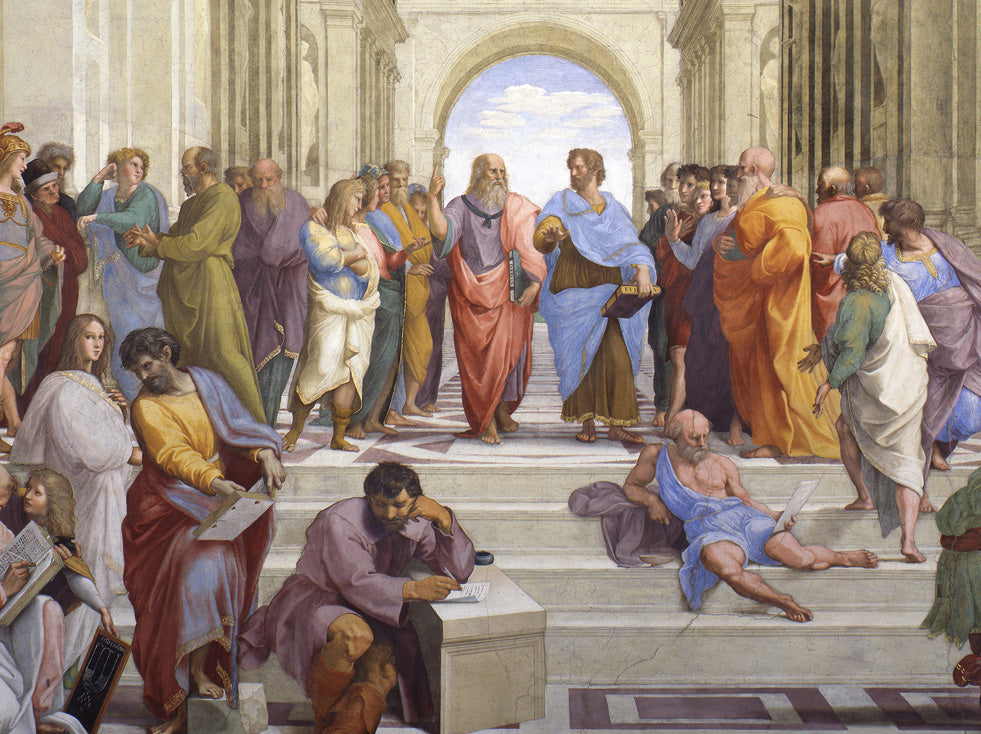
The School of Athens: Art Between Heaven and Earth
Share
In the center of Raphael’s The School of Athens, two men dominate the scene: Plato and Aristotle. Everything in the painting radiates from their conversation. Everyone else—mathematicians, philosophers, scientists—become supporting actors to this central debate. If you want to understand what this painting really says about art, you have to start with their hands.
Plato points up. Aristotle gestures horizontally. One gesture reaches beyond; the other stays grounded. Two philosophies. Two definitions of reality. And in turn, two different ideas of what art is supposed to be.
Plato believed in forms. He argued that the material world was a shadow of something higher, something perfect and eternal. What we see is only an imitation of true reality, which lives in the realm of ideas. For Plato, the artist’s job wasn’t simply to copy nature, but to reach upward—to hint at that higher truth, to guide the viewer’s mind toward the ideal forms behind the world.
Aristotle took the opposite route. Reality was not some distant, abstract place. Reality was right here, in the world you could see, touch, and measure. He believed knowledge came from observation, from experience. For Aristotle, art’s job was not to transcend nature but to perfect it. To take the raw material of the world and organize it into something more complete, more harmonious. Art wasn’t an escape from the world—it was a deeper engagement with it.
That tension is still with us. Every artist stands somewhere between these two poles. Do you create art to reveal something eternal, something spiritual? Or do you create art to reflect and sharpen the world as it is? The ideal or the observable? The heavenward gesture or the grounded hand?
Raphael understood both sides. That’s why The School of Athens works. It’s not just a snapshot of philosophy. It’s a visual argument about art itself. The architecture soars upward, echoing Plato’s vertical ambition. But the figures are physical, present, anchored, honoring Aristotle’s insistence on the observable world. The painting itself becomes a synthesis: heavenly structure filled with earthly bodies.
The irony is that Raphael made his own choice, without saying it out loud. His mastery of anatomy, space, and light shows a deep Aristotelian discipline. But the harmony, the balance, the sense of divine proportion? Pure Platonic form. In a way, Raphael’s painting is the perfect answer to the debate: both are right. Art lives in the tension.
Over 500 years later, the painting still holds because that question never gets old. What is art for? To transcend? Or to clarify? The answer, like in The School of Athens, might always be both.

4 comments
y3836c
u1jape
ldfmqh
karzoe